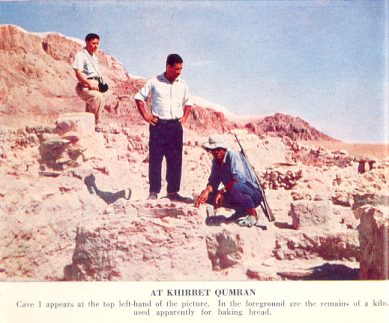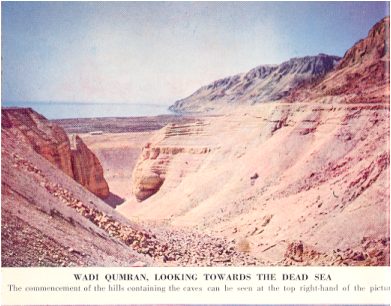

 | WHB Home : All Blogs : Recent Blogs : Second Thoughts on the Dead Sea Scrolls (Review) - 6/5/2009 |  |




 Status: Hidden
Status: Hidden
| Leave a comment: 2 comments ~ | Printable Version |
| PREV | 409 of 459 | NEXT |
 F.F. Bruce is well known for his bible commentaries, so I was delighted to discover a dusty old hardcover book at Half Price Books titled: Second Thoughts on the Dead Sea Scrolls (read online) by F.F. Bruce. Someone in the 1990's had clipped out newspaper articles on the Dead Sea Scrolls and had inserted them into the book, along with train tickets, and the pages of the hardcover had shadows from where the faded old clippings had remained for so many years since the book was published in 1956, (about seven years after the Dead Sea Scrolls were discovered in 1949 in Qumran.) F.F. Bruce is well known for his bible commentaries, so I was delighted to discover a dusty old hardcover book at Half Price Books titled: Second Thoughts on the Dead Sea Scrolls (read online) by F.F. Bruce. Someone in the 1990's had clipped out newspaper articles on the Dead Sea Scrolls and had inserted them into the book, along with train tickets, and the pages of the hardcover had shadows from where the faded old clippings had remained for so many years since the book was published in 1956, (about seven years after the Dead Sea Scrolls were discovered in 1949 in Qumran.) F.F. Bruce is an excellent writer, and the book is exciting to read (NOT BORING) and I felt like I was discovering the scrolls myself, or reading about it for the first time. (I admit I'm nerdy). F.F. Bruce answers all the questions that you need to know about what are the Dead Sea Scrolls, where were they found, how were they discovered, what did they contain, who wrote them, how did they get there, and what they mean to us today. F.F. Bruce also studies the Essenes and Khirbet Qumran and explains all the theories revolving them, as well as the alledged influence this location, people group and writings may have had on the New Testament.  Here's a list of interesting things I learned in the book:
 I saw a selection of the Dead Sea Scrolls in 2003 when they were on exhibit at the Public Museum of Grand Rapids' Van Andel Museum Center. There were fragments of Exodus, the Psalms and many others. I believe I even saw a copy of 1 Enoch.  I found this entire book available online for free! (read here), and there are used copies on Amazon for $4. I highly recommend it. I found the images and book here: http://www.biblicalstudies.org.uk/book_dss_bruce.html
Last Update: June 5, 2009 2:43pm |
| PREV | 409 of 459 | NEXT |
| Leave a comment: 2 comments | [Hide Comments] | Printable Version |
Comments: #1 June 5, 2009 7:14pm I read Bruce's 'The Canon of Scripture.' I think you'd really like it. I think it's regarded as the most thorough treatment of the topic of biblical canonicity available.
phil #2 January 9, 2012 9:36am They found the Ark of the Covenant where Moses placed the 10 Commandments, in a cave under Golgotha. http://arkofthecovenant2.blogspot.com/
Kevin
| ||
| BACK TO COLUMNS | ©2024 http://www.houtz.tv by Wyatt Houtz | LOGIN |